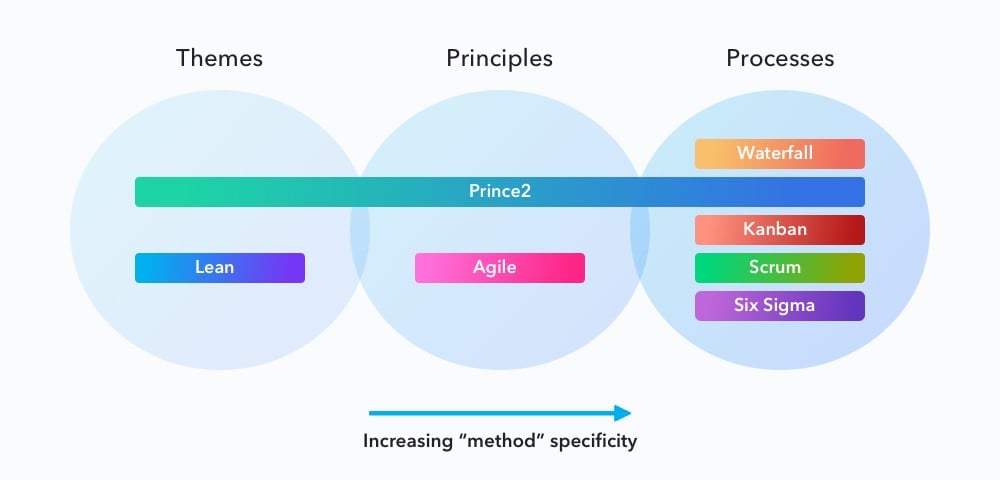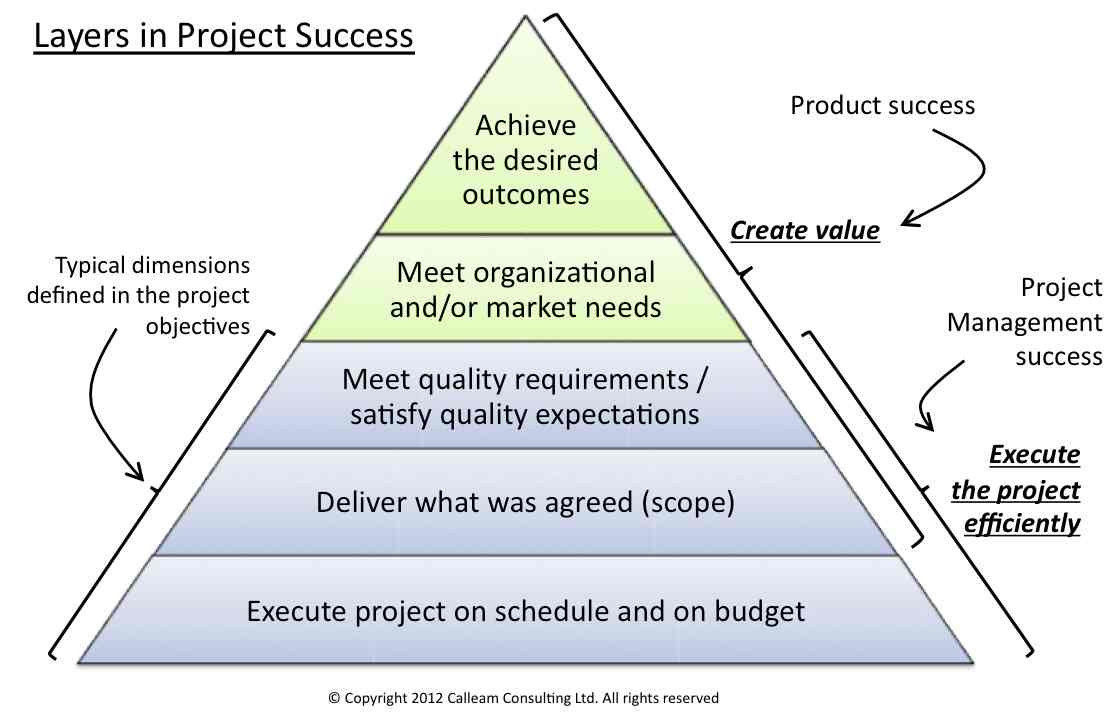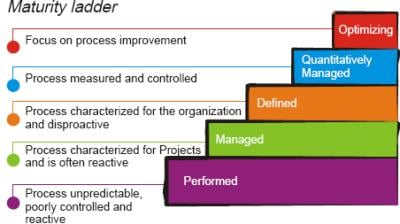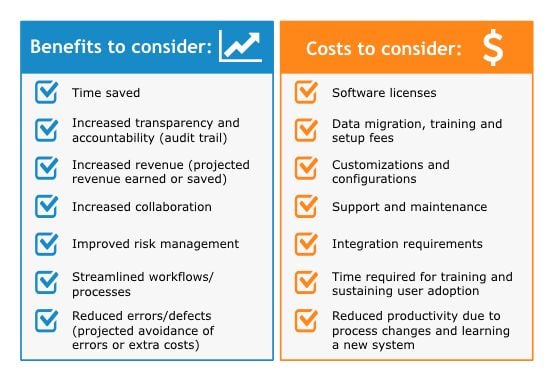108 Project Management Statistics to Help You Ensure Project Success

Project management in all its complexity is always a challenging feat. Now that a lot of organizations have felt the push to experiment with remote operations, the field is confronting new kinds of impediments. However, that has not stopped good project management from being an integral part of an organization’s success.
The radically changing project management landscape today is reshaping the very nature of work. While there is nothing new about change, the project economy requires project managers to continuously create and deliver value through projects. Whether it’s tools, techniques, or ways to minimize project failure, they must pivot quickly to meet changing demands. Project management statistics are crucial for gauging such changes and navigating around them. People, not processes, tools, or systems, deliver projects. That’s why keeping abreast of the recent changes, facts, and statistics will equip you to sharpen your skills and become a better project manager.
Here are some relevant project management statistics that can help you ensure project success.
Project Management Statistics on Methodology
There are several project management methodologies that project managers can choose from. Using the right methodology can help them streamline their workflow and maximize productivity. Here are some eye-opening statistics on project management methodology.

Source: Infinity
1) According to a study by PMI, 71 percent of professionals who took part in the survey use Agile project management methodology very frequently.
2) The same study shows that PRINCE2 is not a popular project management system.
3) Based on a global survey of project management conducted by PWC, 97 percent of organizations believe that using the right project management methodology is critical in ensuring business success.
4) 60 percent of project managers make use of a predefined project management methodology.
Project Management Statistics on Benefits
At the end of the day, it is the decisions project managers make that contribute substantially to a project. That is, using the right project management techniques can improve your chances of achieving success. Here are some statistics that prove the point.

Source: Kissflow
5) According to a study conducted by Pulse of the Profession, organizations that have structured project management in place proved to have 38 percent more project success.
6) Only 21 percent of organizations around the world employ standardized project management systems like Agile or waterfall.
7) 1 out of every 6 IT projects have a cost overrun of about 200 percent.
8) 41 percent of organizations that show poor project performance reported a lack of support from project sponsors, organizational leaders, and project management.
9) IT projects that have a budget of about $1 million have a 50/50 probability of failing.
10) Project management software can save up to 10 minutes every day.
Project Management Statistics on Adoption
Research shows that adopting project management practices can substantially increase the chances of achieving project success. By effectively implementing them, an organization can keep up with changing business needs and market demands. Here are some statistics on the adoption of project management:
11) 21 percent of organizations employ a standardized set of project management practices.
12) 55 percent of project managers reported they draft a scope document before execution.
13) The project management industry expects to grow by $6.61 trillion.
14) 28 percent of organizations around the world use project performance techniques.
15) 77 percent of all best-performing projects make use of project management software.
16) 44 percent of project managers reported they do not use project management software.
Project Management Statistics on the Causes of Failures
You can never narrow down a project’s failure to a single reason. Every project is unique in its own way; the requirements are different, the team and its capabilities vary, the methodology employed can also impact the quality of outcomes. Here are some noteworthy project failure statistics.
17) Absence of defined project objectives is the reason for the failure of 37 percent of projects.
18) 70 percent of projects fail.
19) 44 percent of projects fail when project objectives do not align with business objectives.
20) 80 percent of organizations reported they spend a considerable amount of time reworking their projects.
21) 27 percent of projects are bound to exceed the budget.
22) When underperforming organizations take up projects, only 36 percent of them are completed.
23) 55 percent of companies cannot access real-time key performance indicators.
24) 46 percent of companies do not understand the need for project management.
25) 31 percent of companies believe that the absence of a common vision is the reason for project failures.
26) 47 percent of projects fail due to unhealthy or poor management of business requirements.
27) 37 percent of organizations reported that juggling too many projects is the reason for project failure.
28) 75 percent of companies are not confident in their projects’ success.
29) 56 percent of companies believe their project management system needs to be a lot more mature than it already is.
30) 38 percent of organizations believe the biggest challenge to achieving project success is the lack of consensus among team members about their roles and responsibilities.
31) 63 percent of organizations let the executives decide on when to postpone or close a project.
32) 57 percent of projects fail due to communication barriers.
33) 75 percent of participants in the survey conducted by Geneca reported the lack of consensus in business objectives, dysfunctional relationships with stakeholders, and excess rework are the reasons for project failure.
34) 46 percent of organizations have not fully comprehended the value and significance of proper project management.
35) Only 33 percent of projects get successfully completed within time and budget constraints.
36) 75 percent of professionals expect their projects to fail.
37) 80 percent of project management professionals do not know whether their project aligns with their organizations’ objectives and strategies.
Project Management Statistics on the Reasons for Project Success
Though IT project failure statistics might push you to take a very cynical stand about projects in general, there are some comforting statistics on project success too. A project is successful when it achieves its objectives within time and budget constraints. As unrealistic as it may seem at times, project success is achievable with the right project management system. But a team faces several obstacles while moving through a project lifecycle. Here are some relevant project success statistics.

Source: Calleam
38) 87 percent of best-performing project managers believe that competent delivery capabilities can lower cost and risks while increasing value.
39) 45 percent of PMOs have clearly set goals and defined roles and responsibilities.
40) 89 percent of well-performing organizations complete their projects successfully.
41) 76 percent of well-performing organizations leverage strategic initiatives to achieve project goals.
42) 37 percent of projects are delivered within the expected time.
43) 58 percent of organizations claim that defined practices and processes back their project success.
44) 56 percent of projects have the potential to succeed provided there is talent and effective change management.
Industry-Based Project Management Statistics
Project management is an omnipresent methodology; it is not restricted to a specific industry. The impact of project management in different industries is unique. Here are some interesting industry-specific statistics:
45) There was a 17 percent hike in project management jobs in the U.S. health care industry.
46) 80 percent of federal IT projects used Agile in 2017.
47) 93 percent of communication service providers use Agile methodologies.
48) 25 percent of project managers who took part in a study organized by Geneca reported the business team was inharmonious.
49) 55 percent of project managers said they had a fair understanding of the business objectives.
50) The probability for the failure of an IT project is between 5 to 15 percent.
51) The failure of 17 percent of IT projects could threaten the very existence of the respective organizations.
52) 5 percent of organizations reported that the cost of the project is the main challenge project managers face.
53) 75 percent of IT professionals believe their projects will fail right from the initiation stage.
54) 4 percent of medical professionals reported they make the most of Electronic Health Record Systems (EHS).
Project Management Statistics on Productivity
Project management is now one of the most significant metrics that influence resource optimizing, workflow, and overall productivity. Here are some statistics that show the impact of project management systems on productivity.
55) Kaizen, the Lean project management method, was found to boost employee satisfaction.
56) Every year, the U.S. economy loses $411 billion as a result of low productivity and employees’ sleep loss.
57) Every time there is an economic, political, technological, or climatic change, an average employee’s productivity goes down by 5 percent.
58) Only 35 percent of employees have access to wellness programs at their job.
59) 70 percent of the employees said that pet-friendly environments would increase work satisfaction, productivity, and employee morale.
60) Three-fourths of American workers reported they cannot access technology that boosts their efficiency.
61) Though both employees and employers agreed that stress is the biggest challenge to health, they are not on the same page about the cause of the stress.
62) Employees who spend 80 percent of their time in remote work have better workplace engagement.
63) 22 percent of American workers believe they will lose their jobs due to the diminishing growth of their industries.
64) 50 percent of employees feel that the team’s success motivates them better than the company’s success.
65) 27 percent believe the organization’s success is crucial to their motivation.
66) 23 percent of employees believe that personal goals are superior to the organization’s success and the team’s success when it comes to motivation.
Project Management Statistics on Performance
The overall performance of a project depends on a number of factors, but ultimately, it depends on how well the project was managed. A project gets completed successfully when the project manager fully understands the project’s ins and outs as well as the team members’ roles and responsibilities. Here are some interesting project performance statistics.

Source: PMI
67) 12 percent of organizations felt the reason for their projects’ poor performance was flawed decision-making.
68) A study showed that moving into green buildings can boost the decision-making skills of employees and employers by 8 percent.
69) Owing to the poor performance of projects, for every $1 million investment in projects, $122 million is wasted in the U.S.
70) 31 percent of companies fail to fully realize what benefits they can reap from their projects.
71) 83 percent of high-performing companies invested in project management training.
72) PMTQ or Project Management Technology Quotient is expected to significantly influence project performance in the coming years.
Project Management Statistics on Project Management Maturity
The level of project management maturity will vary in different organizations based on factors such as goals, requirements, needs, scope, and so on. Here are some statistics on PM maturity that are crucial to understanding project success.

Source: Project Value Delivery
73) 85 percent of organizations have PMO.
74) Around 45 percent of PMO personnel have PMP certification.
75) In 65 percent of organizations, the project goals and business objectives align.
76) 36 percent of organizations with PMO expect an increase in future PMO resources.
77) 54 percent of organizations with PMO expect an increase in responsibilities and scope.
78) 97 percent of organizations believe that having a project management system in place is critical to business growth and success.
79) 83 percent of business leaders are aware of the importance of good project management.
80) 56 percent of organizations reported they have only used one project management methodology.
Project Management Statistics on Agile Methodology
There is a huge difference between understanding the philosophy of Agile methodology and actually implementing it. But despite the hardships involved in switching to this methodology, project managers have embraced Agile as one of the most sustainable approaches to developing projects. Here are some statistics that prove the point:
81) By 2030, it is estimated that artificial intelligence will automate up to 80 percent of the routine tasks in Agile.
82) Only 11 percent of the organizations use Agile methodology consistently.
83) Around 56 percent of manufacturers use a combination of multiple project management methodologies.
84) 27 percent of manufacturing organizations make use of Agile project management methodology.
85) 71 percent of organizations claimed they use Agile methodology more frequently than before.
86) 63 percent of organizations said their projects failed due to the absence of compatibility between their former business philosophy and the Agile methodology.
87) 53 percent of project managers said the main factors that drove the increase in their organization’s Agile practices were the shift in priorities and the need to innovate.
88) 28 percent of the Agile projects were more successful than other projects.
89) Around 71 percent of organizations make use of Agile methodology. They may use it all the time or consistently.
Project Management Statistics on Project Management Software
Project managers all over the world have started making the most of project management software. They significantly boost productivity and enhance team collaboration. Here are some interesting statistics.

Source: Software Advice
90) 40 percent of project managers choose project management software, depending on the functionality.
91) 44 percent of project managers do not use project management software.
92) 67 percent of organizations use project management software for effective communication with clients.
93) 90 percent of organizations reported that project management software enhanced their overall productivity.
94) 42 percent of organizations said they reaped most of the benefits by properly using project management software.
95) 56 percent of organizations said that project management software is too expensive for them.
96) 85 percent of companies around the world believe that project management software or AI will change their business and work philosophy in the next five years.
97) 56 percent of organizations have only made use of one project management system.
98) Only 16 percent of organizations are making use of the right project management software.
99) Two-thirds of organizations use project management software to communicate with clients.
Project Management Statistics on Remote Working
Few organizations were expecting to embrace remote working last year. They really didn’t have the autonomy to choose between managing remote working employees and employees who work on the premises. The pandemic made the decision for them.
That said, here are perhaps the most important project management statistics of 2021 that will help you understand how remote working has had an impact on our work culture.
100) 88 percent of workers reported that the assistance from their leaders was inconsistent and that the scope for miscommunication increased.
101) At the beginning of 2020, 36 percent of employees were working from home.
102) 73 percent of employees said they face burnout while working from home.
103) In 2020, the pandemic increased employee burnout by 12 percent in two months.
104) 83 percent of employees said they felt overwhelmed and burnt out by the sheer volume of emails they received daily.
105) 20 percent of employees said that the primary reason for their burnout was the workload.
106) 42 percent of employers said they would choose remote working for the rest of their lives.
107) 83 percent of employees believe that remote working would make them happy.
108) 33 percent of employees said the best way for them to stay productive in remote working was by setting a personal schedule.
If you are looking to build your career in project management, get started with GreyCampus, a PMI Authorized Training Partner (ATP) and a leading provider of PMP certification training. It’s PMP certification training program comes with audio/video lectures, quality learning materials, simulated tests, practice questions, and assured 35 contact hours. The bootcamp is a six-month intensive training program that is designed to help candidates crack the PMP certification exam in one go. It offers you unlimited access to live classes and a one-year mentorship.
Want To Address Project Management Challenges Better? Join a Bootcamp Today!
